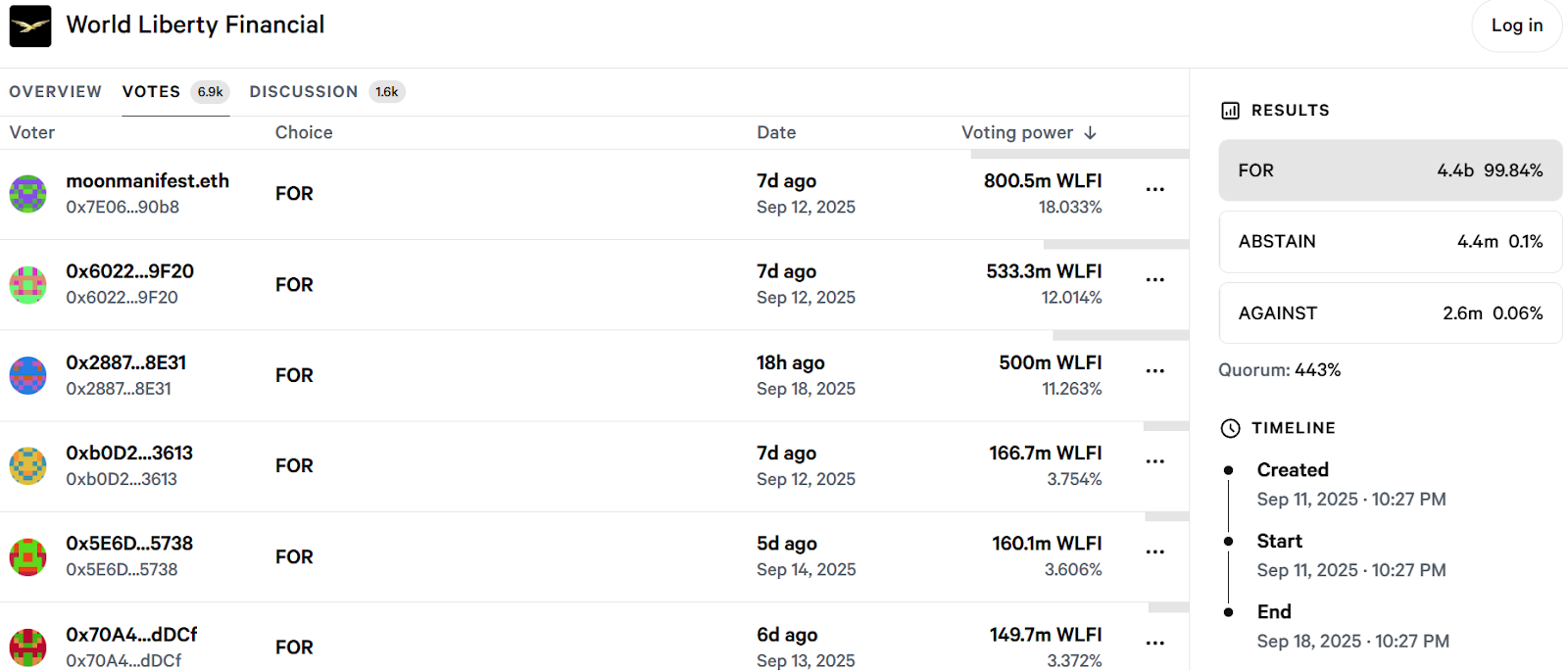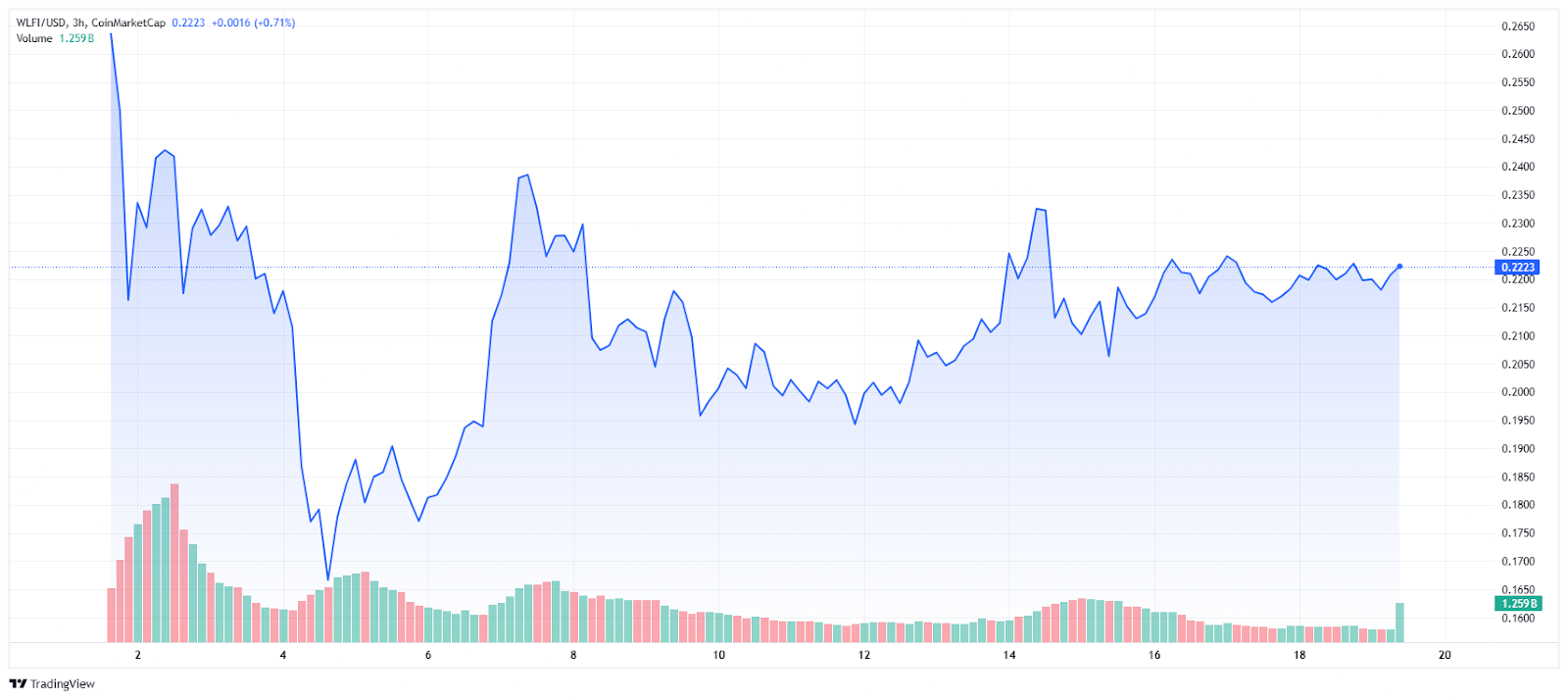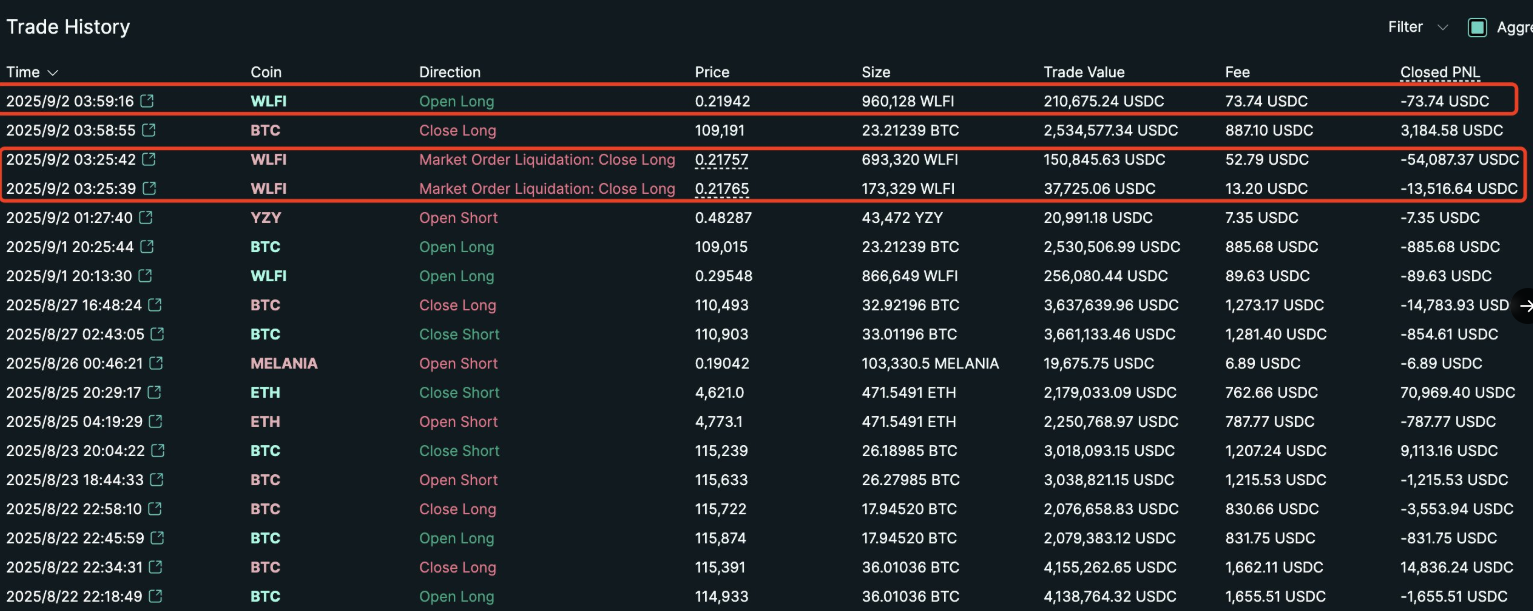WLFI buybacks are now funded by 100% of the protocol’s treasury liquidity fees, per a governance vote that passed with 99.8% support. The plan directs fees to open‑market WLFI purchases followed by burns to lower circulating supply and benefit long‑term holders.
-
Governance approved 100% treasury liquidity fees for WLFI buybacks and burns.
-
Vote passed with 99.8% support; tokens to be bought on markets on Ethereum, BNB Chain and Solana.
-
WLFI has fallen ~28% since launch; platform will also explore new protocol revenue sources to scale buybacks.
WLFI buybacks: Governance routes 100% treasury liquidity fees to token buybacks and burns to reduce supply and support holders. Read how it works and what to expect.
The proposal seeks to create more value for long-term WLFI tokenholders, while exploring additional protocol revenue sources for token buybacks.
What did the WLFI governance vote approve?
WLFI buybacks were approved to be funded by 100% of the protocol’s treasury liquidity fees, with purchased tokens sent to a burn address to remove them permanently from circulation. The measure passed with a 99.8% majority and establishes the platform’s baseline buyback strategy.
World Liberty Financial — the Donald Trump‑backed crypto project — confirmed the governance decision after its WLFI token launched in early September and experienced a notable post‑launch price decline.

Proposal to use 100% of WLFI treasury liquidity fees for buybacks and burns. Source: WorldLibertyFinancial.com
How will the buyback and burn mechanism work?
The protocol will collect liquidity fees from on‑chain positions across Ethereum, BNB Chain and Solana. Collected fees will be converted to WLFI on open markets and sent to a known burn address for permanent removal.
The governance text describes the program as a way to “remove tokens from circulation held by participants not committed to WLFI’s long‑term growth,” increasing the relative holdings of long‑term supporters.
The proposal does not include concrete fee‑generation estimates, leaving the eventual scale and market impact of buybacks unclear until fee data is available.
Why did WLFI implement buybacks and burns?
WLFI’s early trading showed heavy selling pressure: the token fell roughly 40% in the first three days after its Sept. 1 launch, before later reporting a decline of about 28% from launch levels. The buyback and burn policy aims to tighten circulating supply and support price discovery for committed holders.
Earlier token burns occurred on Sept. 3 when the platform burned 47 million WLFI, which did not stop the initial post‑launch slide. The governance vote is designed to create an ongoing, fee‑funded mechanism rather than one‑off burns.

WLFI/USD, all-time chart. Source: CoinMarketCap
Will buybacks be large enough to move markets?
At present, the proposal lacks transparent estimates of protocol fee revenue, so market impact is uncertain. The project intends to explore additional protocol revenue sources to scale buybacks, which could increase the magnitude of future repurchases if successfully implemented.
Independent reporting in industry outlets noted early WLFI losses among large holders. The platform’s team has characterized the buyback program as a foundational step toward a more systematic approach to supply management.
Frequently Asked Questions
How much of WLFI’s treasury will fund buybacks?
The governance proposal directs 100% of the project’s treasury liquidity fees toward WLFI buybacks and burns. It does not allocate other treasury assets or provide fee‑generation projections.
What chains will be used for buybacks?
WLFI will use liquidity collected from Ethereum, BNB Chain and Solana to fund open‑market token purchases that are then burned.
How does burning tokens affect long‑term holders?
Burns reduce circulating supply, which can increase the relative share of tokens held by long‑term investors and potentially improve price support if demand holds or grows.
Key Takeaways
- Governance action: WLFI voted to allocate 100% of treasury liquidity fees to buybacks and burns.
- Execution plan: Fees from Ethereum, BNB Chain and Solana liquidity positions will fund market purchases; tokens then burned.
- Uncertainties: No published fee estimates yet; impact depends on actual revenue and any new protocol income sources.

Source: Lookonchain
Conclusion
The WLFI governance vote establishes a fee‑funded buyback and burn framework aimed at reducing circulating supply and supporting long‑term tokenholders. While the decision passed with overwhelming support, the absence of fee projections leaves the potential market impact unclear. Watch for the platform’s reporting on protocol revenues and future buyback cadence to assess effectiveness.
